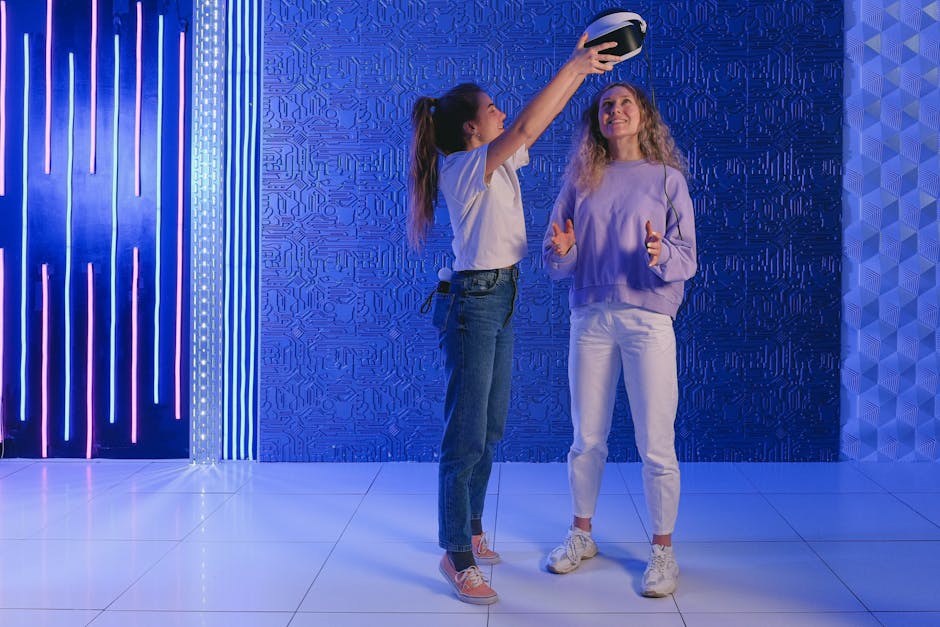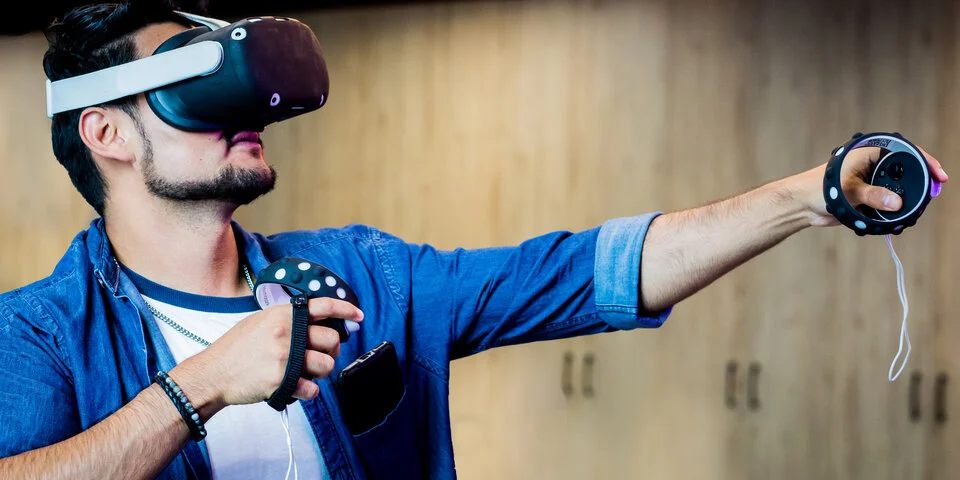
Beyond the Smartphone: How Android is Powering the Future of Mixed Reality
For over a decade, Android has been the undisputed king of mobile operating systems, powering billions of smartphones and tablets worldwide. This dominance has created a vast and interconnected ecosystem of apps, services, and hardware. However, the latest Android news signals a monumental shift in strategy, as Google and its key partners set their sights on the next major computing platform: Extended Reality (XR). The conversation is no longer just about Android phones or incremental software updates; it’s about building the foundational OS for a new generation of immersive Android gadgets. Recent developments indicate that major players are gearing up to launch high-end mixed reality headsets, aiming to bring spatial computing to the mainstream. This move isn’t just an experiment; it’s a calculated, strategic push to define the future of how we interact with digital content, blending our physical and virtual worlds in ways previously confined to science fiction. This article explores this emerging frontier, analyzing the technology, the key players, and the profound implications for developers and consumers alike.
The New XR Alliance: Unpacking the Google, Samsung, and Qualcomm Partnership
The push for an Android-powered XR future isn’t a solo endeavor. It’s a strategic alliance between three industry titans, each bringing a critical piece of the puzzle to the table. This collaboration is designed to counter established players like Meta and challenge newcomers like Apple by leveraging the combined strengths of the Android ecosystem. Understanding the role of each partner is crucial to grasping the potential and the strategy behind this ambitious venture.
Google: The Software Architect
At the heart of this initiative is Google, providing the software foundation. While Meta’s Quest platform is built on a forked version of Android (the Android Open Source Project), Google is developing a dedicated version of Android optimized for spatial computing. This new platform, likely to be deeply integrated with Google’s services, aims to provide a standardized framework for XR hardware. This includes developing a 3D user interface, APIs for hand and eye tracking, spatial audio processing, and seamless integration with the Google Play Store. Google’s goal is to do for XR what it did for smartphones: create a powerful, open platform that any hardware manufacturer can adopt, fostering competition and innovation. This prevents the fragmentation that plagued early Android VR efforts and provides developers with a single, cohesive target for their applications.
Samsung: The Hardware Powerhouse
Samsung’s role is to translate Google’s software vision into a tangible, high-performance consumer device. As a world leader in display technology, mobile processing, and consumer electronics manufacturing, Samsung is uniquely positioned to build a flagship XR headset. The company can leverage its expertise in OLED and Micro-OLED displays to deliver the high-resolution, low-latency visuals critical for an immersive experience. Furthermore, its deep experience in designing complex consumer electronics—from Android phones to smartwatches—will be vital in tackling the ergonomic and thermal challenges of a powerful, head-worn computer. Samsung’s contribution will be the physical manifestation of the platform, a premium device designed to showcase the full potential of Android XR and set the standard for other manufacturers to follow.
Qualcomm: The Silicon Engine
Powering this next generation of Android gadgets is Qualcomm. The company’s Snapdragon XR series of chipsets are already the industry standard for standalone VR and MR headsets, including the Meta Quest line. The collaboration will likely center around a next-generation Snapdragon XR chip, custom-tuned for the demands of Google’s XR platform and Samsung’s hardware. This involves more than just raw processing power. The chip must efficiently handle multiple high-resolution camera feeds for passthrough video, complex sensor fusion for tracking, and on-device AI for tasks like hand tracking and environment mapping—all while operating within a strict thermal and battery life budget. Qualcomm’s silicon provides the specialized architecture needed to make a seamless, high-fidelity mixed reality experience possible in a standalone form factor.

Deconstructing the Android XR Platform: A Technical Deep Dive
An operating system for mixed reality is fundamentally different from one designed for a flat screen. It must manage a constant stream of sensor data, render two separate high-resolution displays simultaneously, and present a user interface in three-dimensional space. The upcoming Android XR platform represents a significant evolution of the core Android framework to meet these unique challenges.
The Spatial UI and Interaction Model
The most significant departure from traditional Android will be the user interface. Instead of a grid of icons, users will interact with windows, apps, and objects floating in their physical space. This requires a new interaction paradigm. The platform will need to natively support advanced input methods, including:
- Hand Tracking: Using onboard cameras to track the user’s hands and fingers with high fidelity, allowing for direct manipulation of virtual objects through gestures like pinching, grabbing, and swiping.
- Eye Tracking: Monitoring where the user is looking to enable foveated rendering (a technique that renders the area in focus at the highest resolution, saving processing power) and to serve as a selection input, where a user can look at an item and pinch to select it.
- Controller Support: While direct hand interaction is key for mixed reality, precision controllers will remain essential for gaming and creative applications, and the OS must support them seamlessly.
This multi-modal input system must be intuitive and responsive, forming the core of the user experience. The success of Android XR will heavily depend on how well Google can abstract this complexity for developers, making it easy to build apps that feel natural to control.
High-Fidelity Passthrough and World Understanding
A key feature of modern mixed reality headsets is “passthrough”—using external cameras to show the user a real-time video feed of their surroundings, upon which virtual elements are overlaid. For this to be effective, the passthrough must be high-resolution, full-color, and have near-zero latency to avoid causing motion sickness. The Android XR platform must be optimized for this data pipeline, processing gigabytes of video data per second. Beyond simply displaying the world, the OS will need sophisticated “world understanding” capabilities. This involves using cameras and sensors (like LiDAR or depth sensors) to create a 3D mesh of the user’s environment, allowing virtual objects to realistically interact with physical surfaces—for example, a virtual ball bouncing off a real table or a virtual screen hanging on a real wall.
Implications and Insights: The Ecosystem Play
The introduction of a robust Android XR platform has far-reaching implications for the entire technology landscape. It’s not just about a new product category; it’s about extending the Android ecosystem into the third dimension, creating new opportunities and challenges for developers, consumers, and the competition.
For Developers: A New Gold Rush with Familiar Tools

For the massive global community of Android developers, this represents a new frontier. Google’s strategy will likely involve providing XR extensions to existing Android developer tools like Android Studio and Kotlin. This lowers the barrier to entry, allowing developers to leverage their existing skills to create immersive experiences. The potential rewards are immense, spanning several key areas:
- Productivity: Apps that create virtual multi-monitor setups for work, collaborative 3D design and modeling tools (e.g., for architects or engineers), and immersive data visualization platforms.
- Entertainment: Fully immersive games that turn a living room into a virtual battlefield, shared virtual cinema experiences, and interactive educational content that brings subjects to life.
- Communication: Next-generation video conferencing with photorealistic avatars and shared virtual spaces for meetings and social gatherings.
However, developers will face the classic Android challenge: fragmentation. As other manufacturers like Xiaomi, Lenovo, or OnePlus potentially release their own Android XR headsets, developers will need to ensure their apps work across a variety of hardware with different display resolutions, tracking capabilities, and controller types. Adherence to open standards like OpenXR will be critical for managing this complexity.
For Consumers: Choice, Integration, and a New World of Content
For consumers, the arrival of Android XR headsets promises more choice in a market currently dominated by a few key players. This competition should lead to more competitive pricing and a faster pace of innovation. A significant advantage will be the deep integration with the existing ecosystem of Android phones. Imagine receiving notifications from your phone seamlessly in your field of view, easily casting content from your device to a giant virtual screen, or using your phone as a precision input device. This interoperability with other Android gadgets will be a key selling point, making the headset a natural extension of a user’s digital life rather than an isolated device. The success of the platform will ultimately hinge on the availability of a “killer app”—an experience so compelling that it justifies the purchase of the hardware.
Navigating the Path Forward: Recommendations and Considerations
While the promise of Android XR is immense, the path to mainstream adoption is fraught with challenges. Both the platform creators and potential adopters must navigate this new territory with a clear understanding of the hurdles and opportunities.

Key Challenges to Overcome
- The App Gap: A new platform is nothing without applications. Google and its partners must aggressively court developers and incentivize the creation of a rich library of high-quality XR content to compete with the established Meta Quest Store.
- Performance and Comfort: Cramming the power of a computer into a lightweight, comfortable headset that can run for hours on a single charge is a monumental engineering challenge. Overcoming issues of weight, heat, and battery life is non-negotiable for consumer acceptance.
- User Experience Cohesion: Google must enforce a level of quality and consistency across different hardware manufacturers to ensure a baseline user experience, preventing the kind of fragmentation in quality that can harm a platform’s reputation.
Recommendations for Early Adopters and Developers
For consumers interested in this new wave of Android gadgets, patience may be a virtue. It’s often wise to wait for the second generation of a new hardware category, as early models can have unforeseen issues and the software ecosystem will take time to mature. When considering a purchase, focus on your primary use case—is it for gaming, productivity, or media consumption?—and choose a device that excels in that area.
For developers, the time to start learning is now. Familiarize yourself with 3D development engines like Unity and Unreal Engine, and explore the OpenXR standard. Begin by creating small-scale prototypes to understand the principles of spatial design and interaction. Focusing on creating experiences that are uniquely suited to mixed reality, rather than simply porting 2D apps into a 3D space, will be the key to success.
Conclusion: The Dawn of a New Android Era
The latest Android news confirms that we are on the cusp of a significant expansion of the Android universe. The strategic partnership between Google, Samsung, and Qualcomm is a formidable force aimed at democratizing spatial computing and bringing mixed reality to the masses. This initiative moves beyond the realm of niche Android gadgets and positions XR as a core pillar of the platform’s future. For consumers, this heralds an era of increased choice and deeper integration between their digital and physical lives. For developers, it opens up a new creative canvas with limitless potential. While significant challenges remain, Android’s entry into the XR space is set to ignite a new wave of innovation, fundamentally changing how we work, play, and connect with one another in the years to come.



